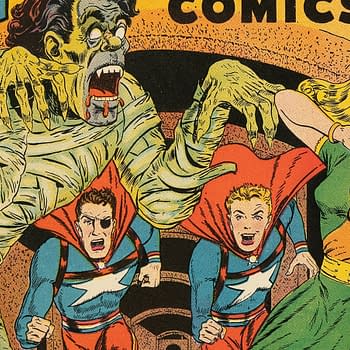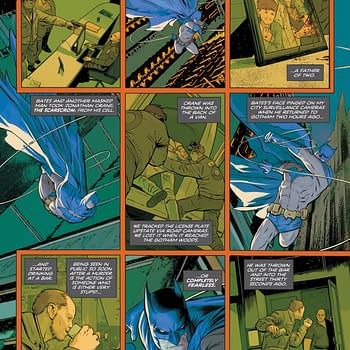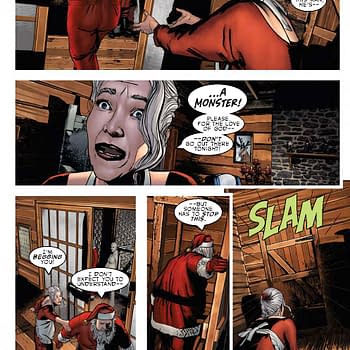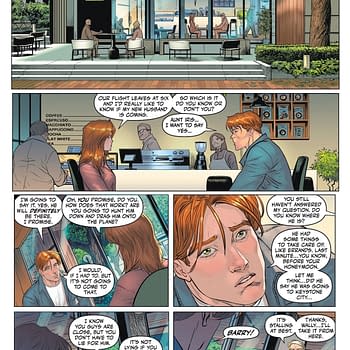Posted in: Comics, Comics History | Tagged: chimney corner, doctor strange, steam man, story papers, vintage comics
The Doctor Strange Of 1867
I bought this for cheap on a whim recently, because the image is so interesting, but it turned out to be far more fascinating than I thought it might be. This is Auguste Henri Jacob — "Jacob the Zouave" (as I understand it, meaning, a member of the French colonial light infantry corps, known for their fighting skill and impressive uniforms), who in the year this issue of La Lune was printed, 1867, was believed by some to be able to wield healing and clairvoyant ability derived from 'animal magnetism'. Artist Andre Gill, a well-known caricaturist of the era who is often credited with popularizing the "big head" style of caricature, frequently faced both government and legal opposition to his character portraits in La Lune and elsewhere, which I think gives us an idea of what Gill thought of Auguste Henri Jacob's claims.
It's probably no coincidence that the rise of the notion of animal magnetism and similar concepts based around the theories of Franz Mesmer (Mesmer as in Mesmerism, of course), took a sharp rise in this decade — the same decade that pivotal science fiction story Steam Man of the Prairies was published. The forces of science were dramatically influencing how men thought of the world around them and the natural forces at work in it. This is the decade the world was being connected up with submarine telegraphs and trans-continental railroads. It was the dawn of the rise of electricity, and more.
I noted something similar recently in an 1866 story called The Stereoscope in important story paper Chimney Corner (which I think of as the "Detective Comics" of the dime novel era — not that it was all detective and mystery stories, but it was the gathering storm clouds that preceded the Blood and Thunder era of the mid-1870s through the 1890s), based around the notion of photography: What exactly did a photograph capture? If a stereoscopic image of my loved one looks almost as real as life, what will it look like when my loved one is dead? Likewise: If a steam man can walk, can he think? If I can instantly communicate with people at great distances, can I communicate with spirits? What's the relationship between electricity and life?
It's questions such as these that people were attempting to come to grips with. In addition to influencing our fiction, it influenced spiritual beliefs as well.


















